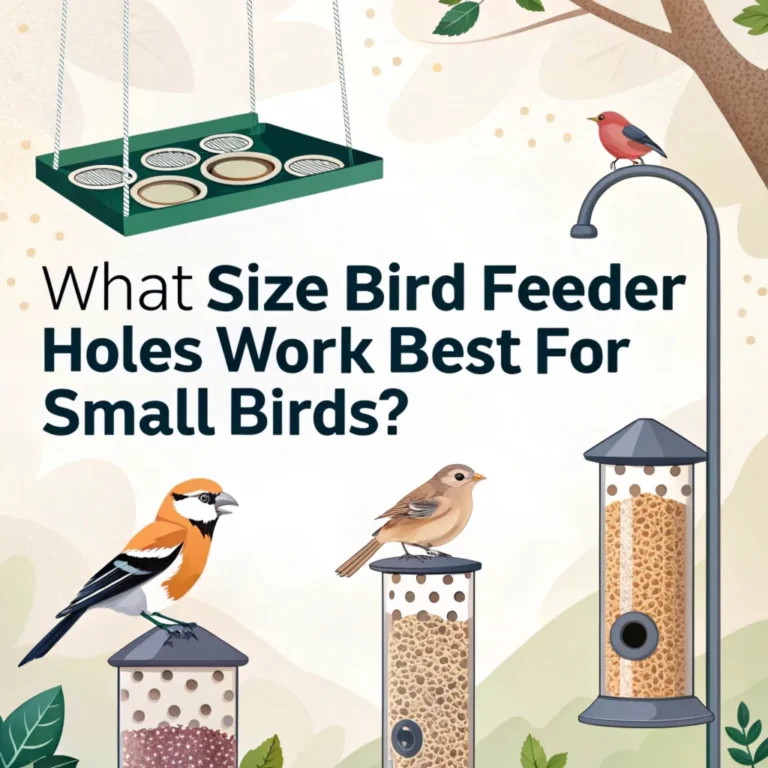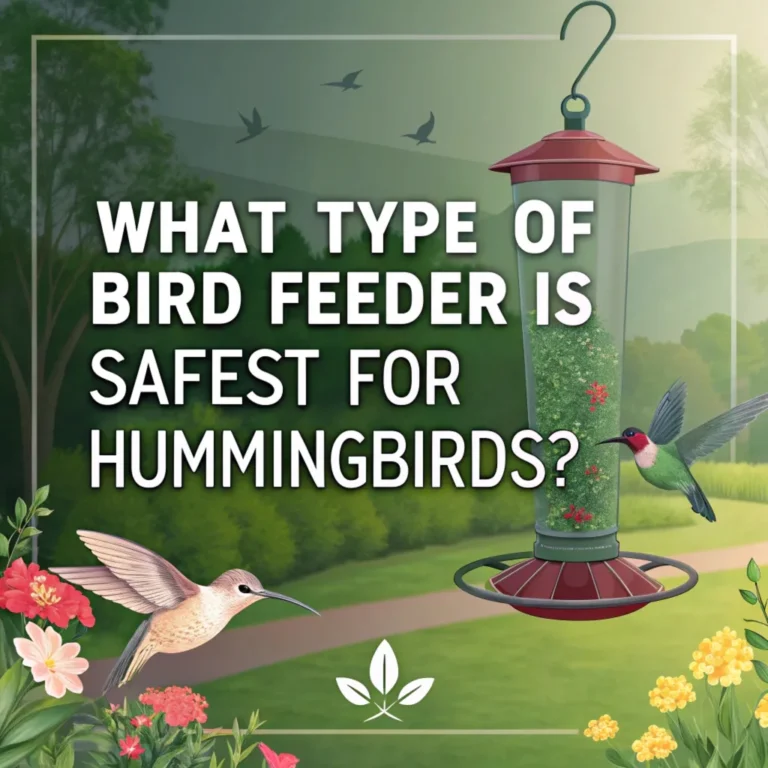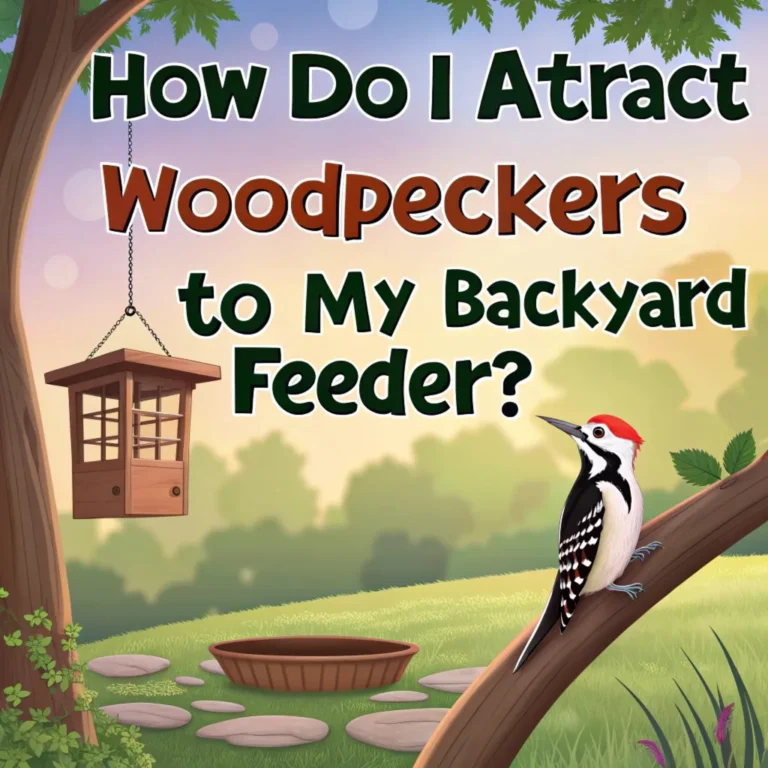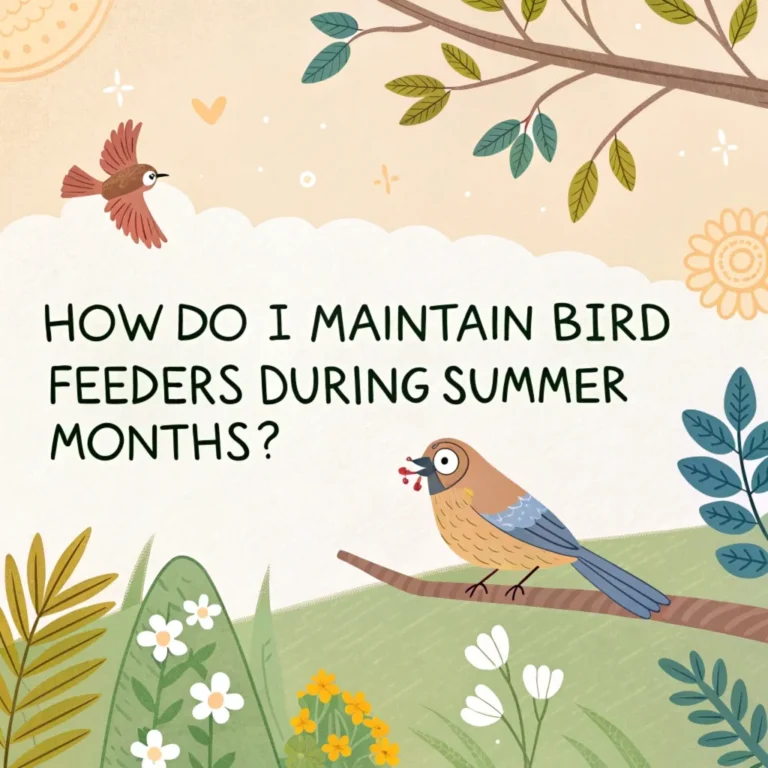How Do I Keep Squirrels Away From My Bird Feeder in Winter?
Keeping squirrels away from bird feeders in winter presents a challenge for bird enthusiasts. This guide offers practical solutions to protect your feathered friends’ food supply.
We explore effective methods to deter squirrels without harming them. These strategies help maintain a peaceful bird-feeding environment during cold months.
Read on to discover how to create a squirrel-resistant bird feeding station in your yard this winter.

Key Takeaways:
- Use squirrel-proof feeders with weight-activated mechanisms or cages
- Install baffles above and below feeders to block squirrel access
- Position feeders strategically, following the 5-7-9 rule
- Choose squirrel-resistant bird food like safflower seeds
- Apply natural repellents such as cayenne pepper to deter squirrels
- Offer alternative food sources for squirrels away from bird feeders
- Maintain your yard to reduce squirrel attraction
- Use creative deterrents like Slinkys on feeder poles
- Consider motion-activated devices to startle squirrels
- Regularly clean up fallen seeds to minimize ground feeding
Understanding Squirrel Behavior in Winter
Squirrels become more active in their search for food during winter. They seek high-calorie sources to survive cold temperatures. Bird feeders offer an easy meal for these resourceful creatures.
Winter survival drives squirrels to be more persistent and creative in their foraging efforts. Their natural food sources, such as nuts and seeds, become scarce as the cold sets in.
This scarcity pushes them to explore new food options, making your bird feeders an attractive target. Squirrels can consume large amounts of bird food quickly, leaving little for the birds you intend to feed.
Understanding this behavior helps in developing effective strategies to protect your feeders. By recognizing the squirrels’ motivations, you can anticipate their actions and implement deterrents that address their specific behaviors.
Choosing Squirrel-Proof Bird Feeders
Invest in feeders designed to keep squirrels out. Weight-activated feeders close when heavier animals land on them. Caged feeders allow small birds access while blocking larger squirrels.
Squirrel-proof feeders come in various designs, each with unique features to outsmart these clever creatures. Some feeders use spring-loaded mechanisms that close access ports when a squirrel’s weight is detected.
Others have adjustable settings to fine-tune the sensitivity based on the size of local squirrels. Caged feeders surround the seed reservoir with a wire mesh, allowing smaller birds to enter while keeping squirrels at bay.
When selecting a squirrel-proof feeder, consider the types of birds you want to attract and the persistence of local squirrels. Durable materials like metal or high-quality plastics ensure longevity against squirrel attacks.
Installing Effective Squirrel Baffles

Baffles create physical barriers squirrels cannot bypass. Place dome or torpedo-shaped baffles above hanging feeders. Use wrap-around baffles on pole-mounted feeders. Proper installation ensures maximum effectiveness.
Baffle installation requires careful consideration of placement and size. For hanging feeders, choose dome baffles with a diameter of at least 15 inches. Position them about 4 inches above the feeder to prevent squirrels from reaching around.
On pole-mounted feeders, wrap-around baffles should be at least 18 inches long and installed at a height of 4 to 5 feet from the ground.
Ensure baffles are securely attached and have no gaps that squirrels can exploit. Regular checks and adjustments maintain their effectiveness over time.
Strategic Feeder Placement
Follow the 5-7-9 rule for optimal feeder placement. Position feeders 5 feet above ground, 7 feet from jumping points, and 9 feet below overhanging branches. This strategy limits squirrels’ access routes.
Careful placement of your bird feeders can significantly reduce squirrel access. The 5-7-9 rule takes advantage of squirrels’ physical limitations. By placing feeders at least 5 feet high, you make it difficult for squirrels to jump directly from the ground.
Keeping feeders 7 feet away from structures or trees prevents squirrels from leaping onto them. Ensuring feeders are 9 feet below any overhanging branches stops squirrels from dropping down.
Consider the layout of your yard when applying this rule. Identify potential squirrel routes and adjust feeder positions accordingly. This strategic placement creates a challenging obstacle course for squirrels while keeping feeders accessible to birds.
Selecting Squirrel-Resistant Bird Food

Choose seeds squirrels find less appealing. Safflower, nyjer, and white proso millet attract birds but deter squirrels. Mix cayenne pepper with seeds to create a spicy deterrent that only affects mammals.
Squirrel-resistant bird food options can significantly reduce feeder raids. Safflower seeds are a popular choice, as many birds enjoy them while squirrels typically avoid their bitter taste.
Nyjer seeds, also known as thistle, attract finches and other small birds but are too small for squirrels to efficiently eat. White proso millet is another seed that birds love but squirrels often ignore.
Experiment with different seed mixes to find the best combination for your local bird population. Remember that while these seeds are less attractive to squirrels, persistent individuals may still attempt to eat them if no other food sources are available.
Applying Natural Repellents
Create homemade repellents using strong-smelling ingredients. Mix garlic, peppermint oil, or vinegar with water. Spray this solution around feeder areas to discourage squirrel visits.
Natural repellents offer a safe and eco-friendly way to deter squirrels. A simple mixture of water and peppermint oil can be effective, as squirrels dislike the strong scent.
Combine 1 tablespoon of peppermint oil with 1 quart of water in a spray bottle. Apply this solution to areas around your feeders, reapplying after rain or every few days to maintain its effectiveness.
Garlic and vinegar solutions can also work well. Crush several garlic cloves and mix with water, or dilute white vinegar with equal parts water. These scents are unpleasant to squirrels but harmless to birds.
Offering Alternative Food Sources
Provide separate feeding stations for squirrels. Place corn or peanut feeders away from bird areas. This distracts squirrels and reduces competition at bird feeders.
Creating a squirrel-specific feeding area can be an effective strategy to protect your bird feeders. Set up a dedicated squirrel feeder stocked with foods they love, such as whole or cracked corn, peanuts in the shell, or sunflower seeds.
Position this feeder far from your bird feeding stations, ideally near the edges of your property or close to wooded areas where squirrels naturally forage.
By offering an easy food source, you can redirect squirrels away from your bird feeders. This approach not only helps protect your bird food but also allows you to observe and appreciate squirrels in a controlled setting.
Maintaining Your Yard
Regular yard maintenance reduces squirrel attraction. Trim tree branches near feeders. Remove fallen fruits and nuts. Keep your yard tidy to minimize potential nesting sites.
Consistent yard care plays a crucial role in squirrel management. Regularly trim tree branches that come within 8-10 feet of your bird feeders.
This pruning eliminates easy access routes for squirrels. Additionally, clean up fallen nuts, fruits, and seeds from your yard promptly. These natural food sources can attract squirrels and encourage them to explore nearby bird feeders.
Maintain a tidy yard by removing piles of leaves, wood, or debris that could serve as squirrel nesting sites. By reducing attractive habitats, you make your yard less inviting to squirrels overall.
Using Creative Deterrents
Attach a Slinky to feeder poles. The stretchy toy prevents squirrels from climbing. Use spinning hooks to hang feeders, making it difficult for squirrels to maintain balance.
Creative solutions often prove effective in outsmarting squirrels. A Slinky toy, when attached to a feeder pole, creates an unstable surface that squirrels struggle to climb. Stretch the Slinky down the length of the pole, securing both ends.
When a squirrel attempts to climb, the Slinky stretches and bounces, causing the squirrel to lose its grip and fall harmlessly to the ground.
Spinning hooks or twirling hangers add another layer of difficulty for squirrels. These devices rotate freely when weight is applied, making it challenging for squirrels to maintain their balance long enough to reach the feeder.
Implementing Motion-Activated Devices
Install motion-sensitive sprinklers near feeders. The sudden water spray startles squirrels without harming them. This method works best in areas above freezing temperatures.
Motion-activated devices provide an effective, hands-off approach to squirrel deterrence. Water sprinklers that activate when they detect movement can startle squirrels and discourage them from approaching feeders.
These devices are humane and can also help water your garden. Position them strategically to cover the areas around your feeders.
For colder climates where water might freeze, consider motion-activated lights or sound devices. These alternatives can still startle squirrels without the risk of creating icy patches in your yard.
Cleaning Up Fallen Seeds
Regularly sweep or rake areas under feeders. Remove spilled seeds to prevent ground feeding. Use seed catchers beneath feeders to minimize mess and squirrel attraction.
Consistent cleanup is essential in managing squirrel activity around bird feeders. Spilled seeds on the ground act as an open invitation to squirrels and can lead to persistent visits.
Sweep or rake the area under your feeders daily to remove fallen seeds. This practice not only deters squirrels but also helps prevent the growth of mold or bacteria that can harm birds.
Install seed catchers or trays beneath your feeders to collect falling seeds. These devices make cleanup easier and reduce the amount of seed that reaches the ground, minimizing squirrel temptation.
Choosing the Right Feeder Location
Select open areas for feeder placement. Avoid locations near trees, fences, or buildings. This reduces squirrels’ ability to jump onto feeders from nearby structures.
Strategic location selection is crucial for minimizing squirrel access to feeders. Open spaces in your yard, away from trees, fences, and buildings, make it difficult for squirrels to reach feeders by jumping.
Aim for areas that are at least 10 feet away from any structure a squirrel could use as a launching pad.
Consider the visibility of your chosen location. Placing feeders in areas where you can easily observe them from your home allows you to monitor squirrel activity and adjust your strategies as needed.
Adjusting Feeding Habits
Fill feeders in smaller amounts more frequently. This practice reduces the reward for persistent squirrels. It also ensures fresh food for birds throughout the day.
Modifying your feeding routine can significantly impact squirrel behavior. Instead of filling feeders to capacity, add smaller amounts of seed more frequently throughout the day.
This approach reduces the potential reward for squirrels, making your feeders a less attractive target. It also ensures that birds have access to fresh food throughout the day.
Consider varying the times when you refill feeders. Unpredictable feeding schedules can make it harder for squirrels to anticipate when food will be available, potentially reducing their visits.
Monitoring and Adapting Strategies
Observe which methods work best in your yard. Adjust tactics as needed. Squirrels adapt quickly, so vary your approach to stay one step ahead.
Continuous observation and adaptation are key to long-term success in deterring squirrels. Keep a log of squirrel activity and note which deterrent methods seem most effective.
Be prepared to rotate or combine different strategies over time, as squirrels can become accustomed to a single approach.
Engage in regular assessments of your anti-squirrel measures. What works well in one season might be less effective in another. Stay flexible and be willing to try new methods or adjust existing ones based on your observations.
FAQs
How high should I hang my bird feeder to deter squirrels?
Hang feeders at least 5 feet above ground and 7 feet from any jumping points.
Can squirrels eat bird seed with cayenne pepper?
Squirrels dislike cayenne pepper, but it does not harm birds. Mix it with seeds as a natural deterrent.
Are there any plants that repel squirrels?
Mint, marigolds, and daffodils may help deter squirrels when planted near feeding areas.
How often should I clean my bird feeders?
Clean feeders every two weeks, more often in wet weather, to prevent disease spread among birds.
Do ultrasonic devices work to repel squirrels?
Ultrasonic devices have limited effectiveness and may disturb other wildlife. Physical barriers work better.
By implementing these strategies, you can enjoy watching birds at your feeders while minimizing squirrel interference, even during the challenging winter months.
Remember that persistence and adaptability are key to success in this ongoing battle. With patience and creativity, you can create a bird-friendly environment that keeps squirrels at bay, allowing you to enjoy the beauty and diversity of winter bird visitors to your yard.

Luna is the passionate founder and author of Birds and You, a website dedicated to sharing her love for birds with fellow enthusiasts. Through her engaging articles and guides, she aims to educate and inspire others to explore the fascinating world of birds. When she’s not writing, you can find Luna observing birds in their natural habitats or sharing beautiful bird photography on Pinterest. Join her on this journey to celebrate and protect our feathered friends!







